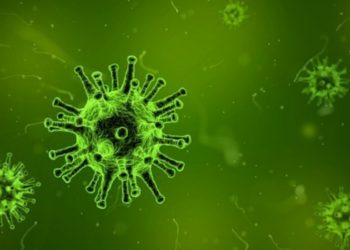Exelixis, Inc. announced that its partner Daiichi Sankyo Company, Limited (“Daiichi Sankyo”) has reported positive top-line results from a phase 3 pivotal trial of esaxerenone (INN; code name CS-3150), a product of the companies’ prior research collaboration, in patients with essential hypertension in Japan. With the trial achieving its primary endpoint, Daiichi Sankyo has communicated its intention to submit a Japanese regulatory application for esaxerenone for an essential hypertension indication in the first quarter of 2018.
In March 2006, Daiichi Sankyo and Exelixis entered into a research collaboration agreement to discover, develop and commercialize novel therapies targeting the mineralocorticoid receptor (MR). Under the terms of the agreement, Daiichi Sankyo has exclusive global development, manufacturing, and commercialization rights for the compounds. Esaxerenone, a non-steroidal, selective novel MR blocker, is one of the compounds identified during the research collaboration, and has subsequently been developed by Daiichi Sankyo. As esaxerenone advances, Exelixis is eligible for substantial clinical development, regulatory, and commercialization milestones, as well as double-digit royalties on sales.
The positive trial, ESAX-HTN, is a randomized, double-blind, three-arm parallel group comparison study evaluating the efficacy and safety of esaxerenone versus eplerenone in patients with essential hypertension in Japan. The primary endpoint is sitting systolic blood pressure (SBP) / diastolic blood pressure (DBP) change from baseline after 12 weeks of treatment, and the secondary endpoint is mean 24-hour SBP/DBP change from baseline after 12 weeks of treatment. The trial enrolled 1,001 patients at approximately 40 clinical sites in Japan. Preliminary and ongoing analyses have indicated no significant safety concerns in the ESAX-HTN study. Daiichi Sankyo plans to disclose the detailed study results at future scientific meetings.
“Daiichi Sankyo continues to make strong clinical progress with esaxerenone, and Exelixis congratulates our collaborator on generating positive top-line results for the ESAX-HTN pivotal trial,” said Michael M. Morrissey, Ph.D., President and Chief Executive Officer of Exelixis. “As Exelixis evolves, collaboration and license revenues from relationships such as this one have the potential to meaningfully contribute to our business, and directly support the development of future Exelixis medicines as we strive to deliver on our mission of helping cancer patients recover stronger and live longer.”
Separately, Daiichi Sankyo also announced the initiation of a pivotal trial of esaxerenone in patients with diabetic nephropathy. The ESAX-DN study is a phase 3 randomized, double-blind, 2-arm, parallel group comparison study with placebo in patients with type-2 diabetes with microalbuminuria who are taking an angiotensin II receptor blocker (ARB) or an angiotensin converting enzyme (ACE) inhibitor in Japan. The primary endpoint is rate of remission to normoalbuminuria after 52 weeks of treatment, and the secondary endpoints are change rate in urinary albumin creatinine ratio (UACR) and estimated glomerular filtration rate (eGFR). The trial is expected to enroll 400 patients at approximately 130 clinical sites in Japan.
About Hypertension in Japan
According to the 2012 Japan National Health and Nutrition Survey, there are an estimated 43 million patients with hypertension in the country, which accounts for 60% of men and 45% of women over the age of 30 in the general Japanese population.1 Only approximately 30% of men and 40% of women with hypertension and treatment with antihypertensive medication typically achieve the goal of systolic and diastolic blood pressure lower than 140/90mm Hg.
Hypertension is one of the major risk factors for cardiovascular disease, such as stroke and coronary heart disease, and the condition also raises the risk of chronic kidney disease and end-stage renal disease.1 Essential hypertension is the most common form of hypertension and has heterogeneous factors such as genetics and lifestyle habits, while secondary hypertension is associated with underlying disease factors. Essential hypertension is the most common form of hypertension, affecting 90% of hypertensive patients.1
About Diabetic Nephropathy
Diabetic nephropathy is one of the most significant long-term complications in terms of morbidity and mortality for individual patients with diabetes. In Japan, approximately 10 million people, or 12.1% of the population, are estimated to have diabetes, with a growing incidence. Approximately 50% of all people with type-2 diabetes will develop evidence of diabetic nephropathy.2 It is the leading cause of dialysis (43.7%, 2015) in Japan.3
Multifactorial intensive therapy, including control of blood glucose, lipid, and blood pressure and using an ARB or ACE inhibitor are recommended in several treatment guidelines for suppressing the onset and progression of early diabetic nephropathy.4-6 However, these traditional therapies are suboptimal and there is a clear, unmet need for additional treatments.7
The progression to advanced stages of diabetic nephropathy is associated with increased risk of dialysis and cardiovascular events. The effect of medication on the suppression of diabetic nephropathy at the advanced stage is not clear. In order to diminish the deterioration of kidney function, it would be desirable to promote remission to normoalbuminuria in diabetic nephropathy in early stages of the disease.8,9
About Esaxerenone (CS-3150)
Esaxerenone is an oral, non-steroidal, selective blocker of the mineralocorticoid receptor (MR), a nuclear hormone receptor implicated in a variety of cardiovascular and metabolic diseases. MR blockers can be used to treat hypertension and congestive heart failure due to their vascular protective effects. Recent studies have also shown beneficial effects of adding MR blockers to the treatment regimen for patients with type-2 diabetes with nephropathy. As a non-steroidal, selective MR blocker, esaxerenone may have potential for the treatment of hypertension, diabetic nephropathy and congestive heart failure, and may provide protection from end organ damage due to vascular complications.
Esaxerenone is one of the compounds identified during Exelixis’ research collaboration with Daiichi Sankyo, which the companies entered into in March 2006. Under the terms of the agreement, Exelixis granted Daiichi Sankyo an exclusive, worldwide license to certain intellectual property primarily relating to compounds that modulate MR. In exchange, Exelixis received a $20 million upfront payment, research funding for a joint research period, and the potential for substantial clinical development, regulatory and commercialization milestone payments, as well as double-digit royalties on sales. Since the conclusion of the joint research period in November 2007, Daiichi Sankyo has been responsible for all subsequent preclinical and clinical development, and will also oversee regulatory, manufacturing and commercialization activities for the compound.
About Exelixis
Founded in 1994, Exelixis, Inc. (NASDAQ: EXEL) is a commercially successful, oncology-focused biotechnology company that strives to accelerate the discovery, development and commercialization of new medicines for difficult-to-treat cancers. Following early work in model genetic systems, we established a broad drug discovery and development platform that has served as the foundation for our continued efforts to bring new cancer therapies to patients in need. We discovered our lead compounds, cabozantinib and cobimetinib, and advanced them into clinical development before entering into partnerships with leading biopharmaceutical companies in our efforts to bring them to patients globally. With growing revenues from the three resulting commercialized products – CABOMETYX®, COMETRIQ®, and COTELLIC® – we are reinvesting in our business to maximize the potential of our pipeline, which we intend to supplement with targeted business development activities and internal drug discovery, all to deliver the next generation of Exelixis medicines and help patients recover stronger and live longer. For more information about Exelixis, please visit www.exelixis.com
Investors Contact:
Exelixis, Inc.
Susan Hubbard, 650-837-8194
EVP, Public Affairs and Investor Relations
shubbard@exelixis.com
or
Media Contact:
For Exelixis, Inc.
Hal Mackins, 415-994-0040
hal@torchcommunications.com


















